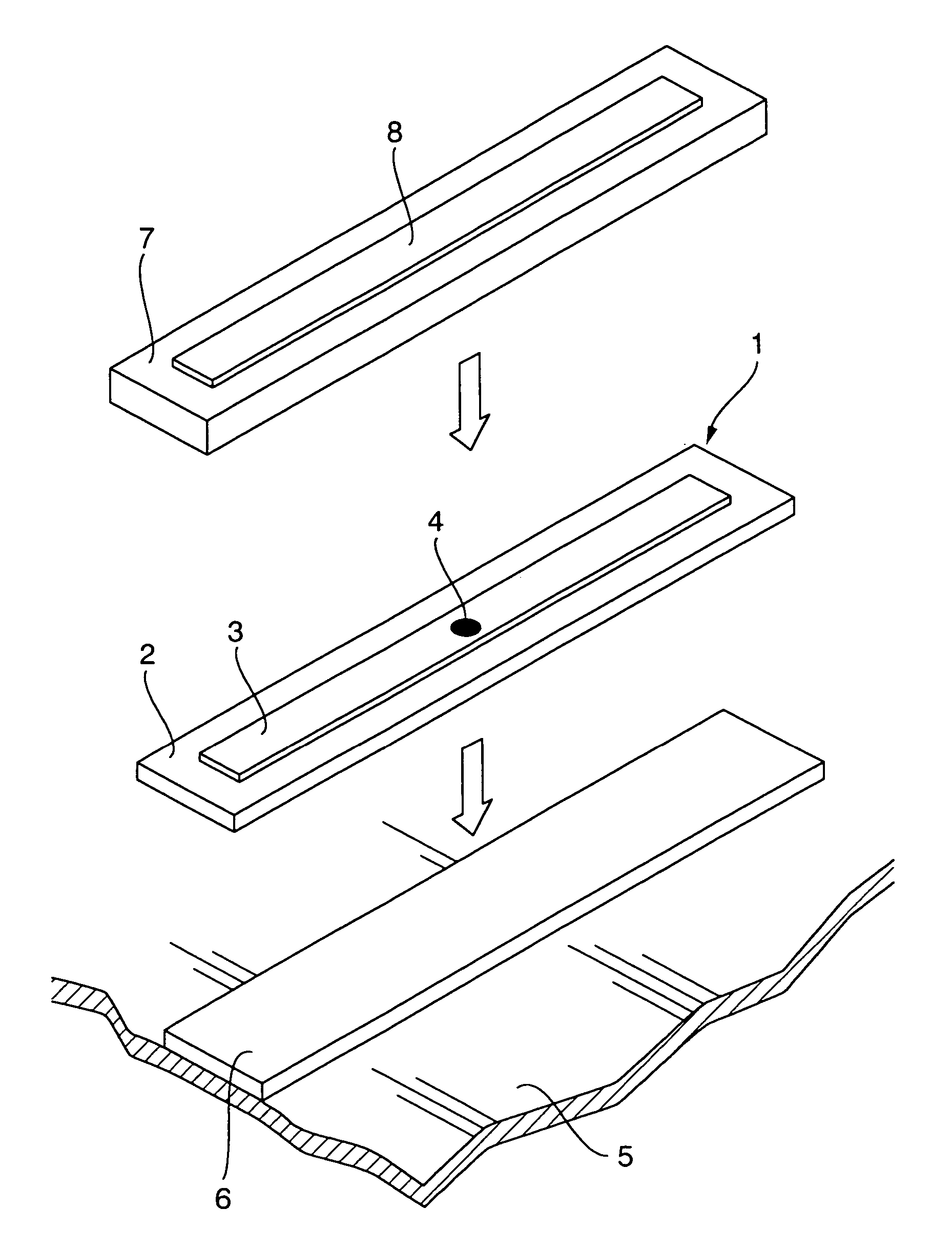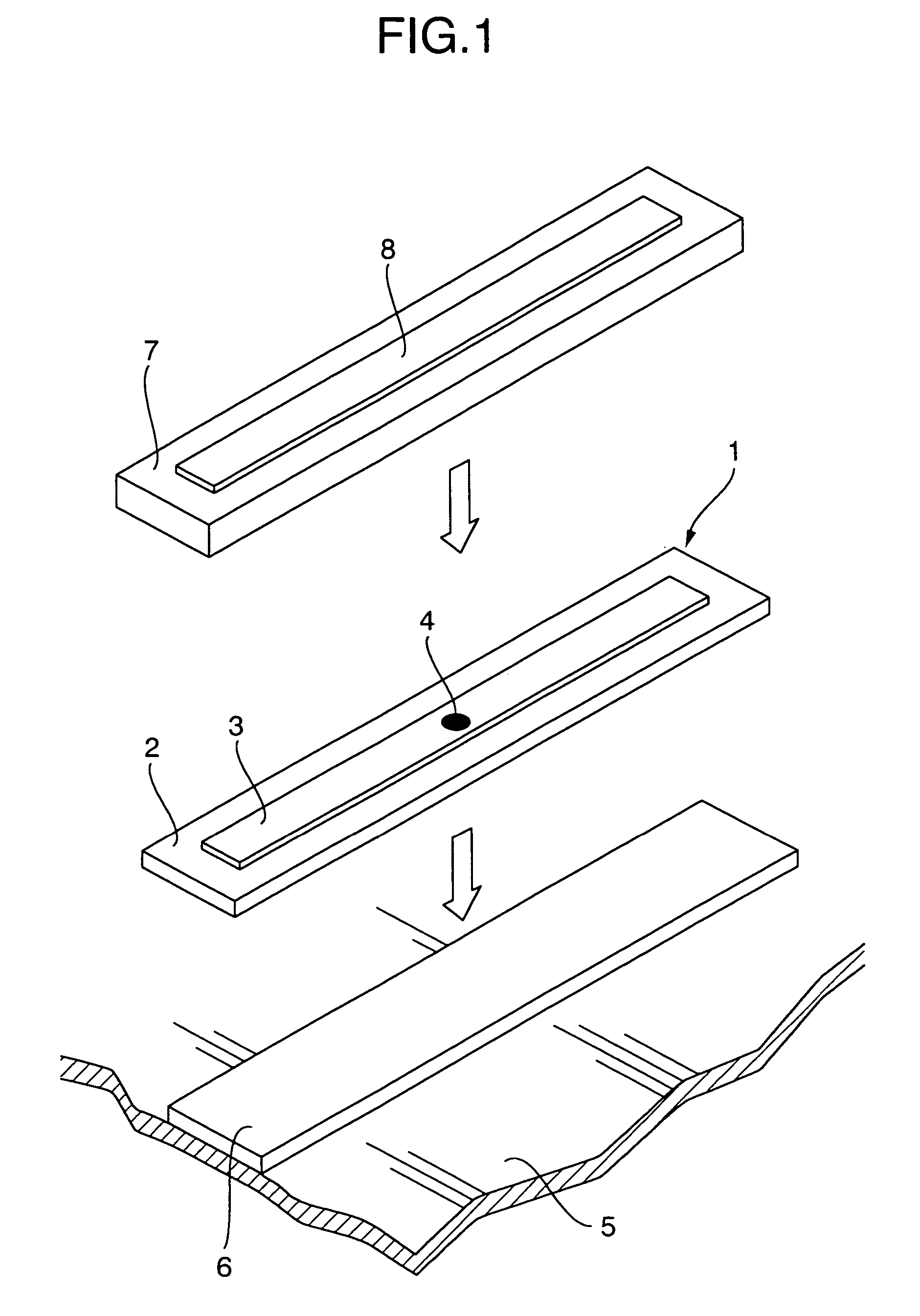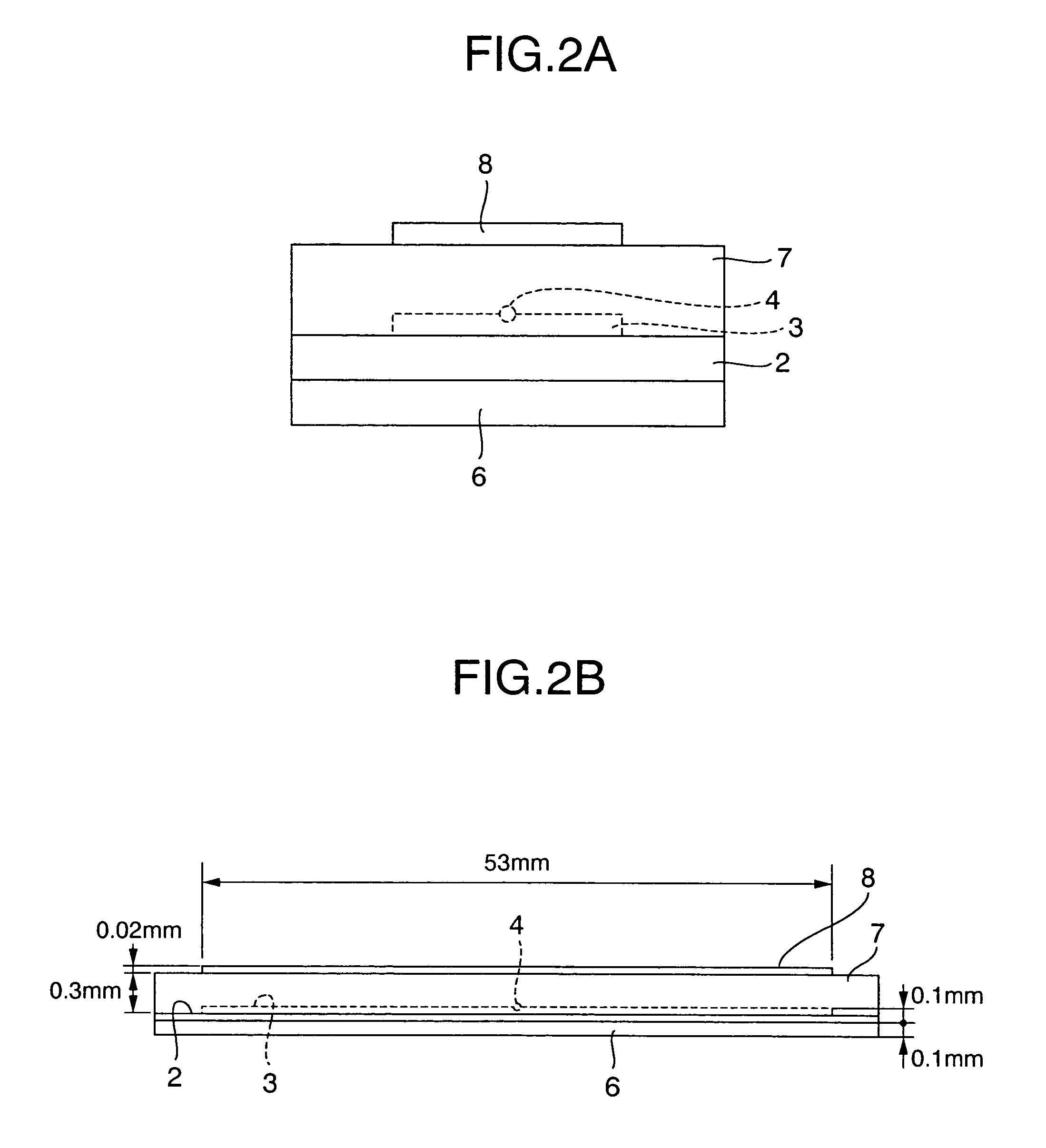Wireless IC tag, and method and apparatus for manufacturing the same
a technology of ic tags and wires, applied in the direction of insulated conductors, cables, instruments, etc., can solve the problems of short detectable distance, weak radio wave to be transmitted from the wireless tag, and absorbed radio wave in the metallic article of the wireless tag, so as to reduce durability, increase communication distance, and reduce the effect of durability
- Summary
- Abstract
- Description
- Claims
- Application Information
AI Technical Summary
Benefits of technology
Problems solved by technology
Method used
Image
Examples
embodiment 1
[0033]FIG. 1 shows a structure of a wireless IC tag in accordance with a first embodiment (embodiment 1). FIG. 2B is a cross-sectional view of the wireless IC tag of FIG. 1 when taken in its width direction, and FIG. 2A is a cross-sectional view of the wireless IC tag of FIG. 1 when taken in its length direction. Among members of the wireless IC tag shown in FIG. 1; a base material 2, an antenna (first antenna) 3, and an IC chip 4 form a plate shape, and are collectively called “inlet 1”. Reference numeral 5 denotes a member on which the wireless IC tag is mounted. The wireless IC tag according to embodiment 1 includes the inlet 1 having the first antenna 3 mounted on the base material 2 to be connected to the IC chip 4 having ID information stored therein, a first spacer 6 mounted on a lower surface of the inlet 1 (e.g., on the side of the inlet opposed to the metallic member 5), a second spacer 7 mounted on an upper side of the inlet 1 (on the side of the inlet opposed to the meta...
embodiment 2
[0053]FIG. 5 schematically shows a structure of an apparatus for manufacturing such a wireless IC tag (as having the structure shown in FIG. 1). Constituent elements having the same functions or structures as in FIG. 1 are denoted by the same reference numerals. In FIG. 5, diagrams shown as surrounded by respective circles in the vicinity of an inlet material 11, a first spacer material 12, a second spacer material 13 and a second antenna material 14, to be explained later, are views of the respective materials when viewed from their planes. A diagram shown as surrounded by a circle in the lower right side of FIG. 5 is a perspective view of the wireless IC tag (having a structure similar to that of FIG. 1) manufactured by the wireless IC tag manufacturing apparatus.
[0054]In FIG. 5, reference numeral 11 denotes the first antenna material (more specifically, the inlet material). As already explained earlier, it is already known that, for example, 10,000 of the first antennas 3 connect...
embodiment 3
[0068]Explanation will next be made in connection with an embodiment when a wireless IC tag is mounted to various types of cables including a communication cable and a power cable, by comparing it with a prior art. FIGS. 10A and 10B show a conceptual view of a condition when a wireless IC tag is mounted onto a cable in the prior art, wherein FIG. 10A is a condition when the tag is mounted to a multicore cable, and FIG. 10B is a condition when the tag is mounted onto a single core cable. As shown in FIG. 10A, in a multicore cable 70 used as a communication cable, a plurality of internal conductors 72 as multiple cores each coated with single core envelope 71 are surrounded by a shield layer 73, which in turn is further covered with a cable enclosure 74. A wireless IC tag 75 is bonded onto the surface of the cable enclosure 74 with an adhesive or the like.
[0069]As shown in FIG. 10B, in a single core, cable 80 is used as a power cable, an internal conductor 81 is covered with a single ...
PUM
| Property | Measurement | Unit |
|---|---|---|
| thickness | aaaaa | aaaaa |
| thickness | aaaaa | aaaaa |
| thickness | aaaaa | aaaaa |
Abstract
Description
Claims
Application Information
 Login to View More
Login to View More - R&D
- Intellectual Property
- Life Sciences
- Materials
- Tech Scout
- Unparalleled Data Quality
- Higher Quality Content
- 60% Fewer Hallucinations
Browse by: Latest US Patents, China's latest patents, Technical Efficacy Thesaurus, Application Domain, Technology Topic, Popular Technical Reports.
© 2025 PatSnap. All rights reserved.Legal|Privacy policy|Modern Slavery Act Transparency Statement|Sitemap|About US| Contact US: help@patsnap.com



